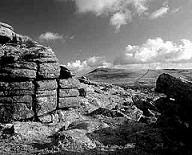

This week I had an unusual experience in that I was asked to teach spinning and dyeing to two Anglo-Saxon re-enactors. This provided several challenges: the Anglo-Saxons apparently spun on low whorl spindles (English drop spindles). In common with many other spinning teachers, I much prefer to use a top whorl spindle. Additionally, there was a requirement to spin from a distaff - something I have often done with a wheel but not with a spindle. We manged, though, and by the end of two days, both students were spinning well.
The dyeing was most successful: we used madder and saffron, but not alum mordant as we weren't sure that alum was available. We modified the colours after dyeing with acid, alkali, copper and iron water. We also tackled woad, and got a lovely delicate blue - the delicacy of the colour being due to the fact that when I gathered the leaves in the morning from my one remaining plant, there was a huge slug enjoying my woad for breakfast!
I have uploaded the madder/saffron pictures above - who says natural dyes are dull?!

Fabulous colours, pity about the slugs, but then they would have had that problem in Anglo-Saxon times!
ReplyDelete